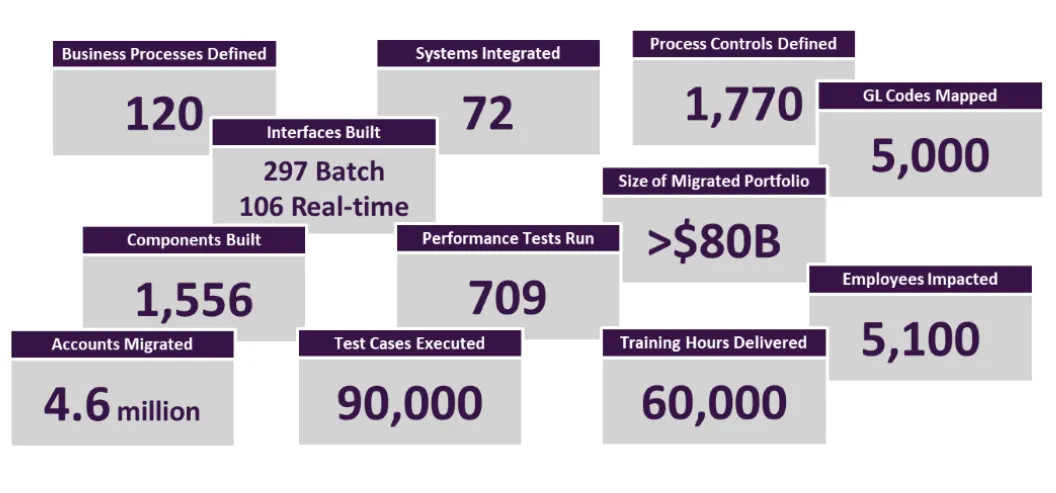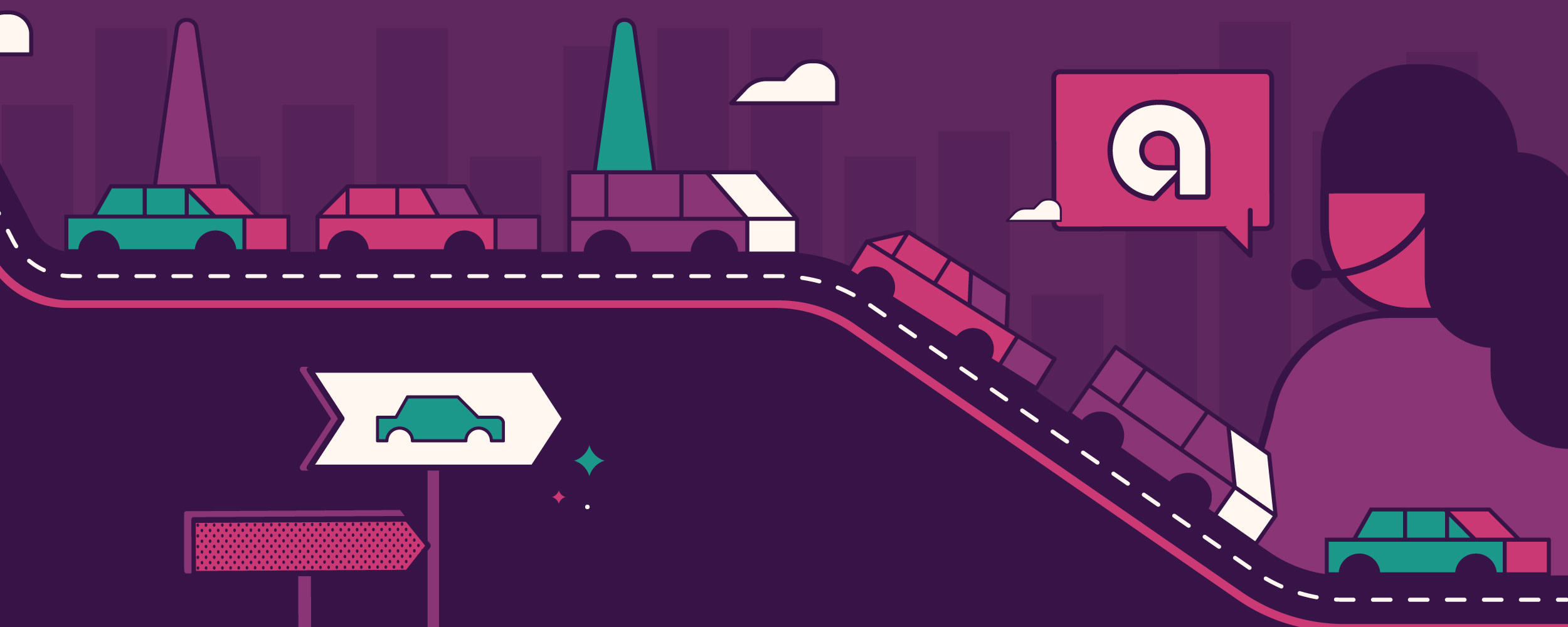Complex Mainframe Migration: A Premier US Auto Lender’s Journey of Modernization
- Spencer Cremers, Kelly DeMont, & Dan Lemont
- 7 min read
Though Ally Financial was ‘digitally born’ in 2009, the company has a 100+ year history: Ally Auto’s offerings date back to 1919. Today, Ally Auto is one of the largest full-service automotive finance operations in the country, offering a wide range of financial services and insurance products to automotive dealerships and consumers.
This rich history is filled with great chapters on the evolution of our technology. One such chapter was our recent migration from a 30-year-old mainframe system to a completely new core platform for Ally’s auto finance retail portfolio. This was the culmination of a multi-year journey, the largest initiative ever undertaken at Ally, that would seamlessly transition Ally’s millions of auto finance customers and thousands of dealers from our legacy mainframe to a modern platform. We learned many key lessons along the way, which we aim to share by way of these articles. While many companies will never undertake a transformation of this scale and complexity, the learnings we’ll share can be applied to different types of projects.
This post will provide the overall context of our journey and explain the criticality of business and technology alignment. In subsequent posts, we will explore a variety of topics including:
Solution Architecture & Design (e.g., Microservices)
Strategy & Approach (e.g., Deployment and Migration)
Operations (e.g., Observability)
Background
The core of Ally Auto’s technology landscape was a rock-solid mainframe running highly customized software. This system served Ally’s needs for 30 years, but it was becoming clear that it would not keep pace with rapidly changing market dynamics, business needs and regulatory requirements. Surrounding the core system were dozens of apps that had grown organically to augment the mainframe. The ecosystem, while stable, had become too rigid to meet Ally’s future needs.
We faced a difficult decision: whether to evolve or completely replace the technology at the heart of our auto finance business. Architecture, cost, timelines and risks were analyzed for multiple options, and the results pointed to a replacement. This strategy afforded several benefits:
Process Digitization: Replacing the core system enabled us to take a fresh look at our business processes and products with an eye to the future, whereas evolving the legacy platform would have resulted in a like-for-like replacement with limited opportunity for innovation.
Technology Modernization: A replacement strategy also allowed us to take a new approach to the entire ecosystem and establish a clean, purposeful architecture that provided future flexibility and scalability.
Enriching Our People: This strategy also had multiple benefits to Ally’s very talented technology team. For one, our associates developed expertise in the new technologies we implemented, which was crucial during the stabilization period and continues to serve us well as we make enhancements to the new platform. Moreover, we made a strategic decision to engage outside experts and resource-providers selectively, to avoid reliance on external partners for an essential part of our business. And, of course, our people were energized to work on an exciting and transformational program that gave them new opportunities to expand their skills and grow their careers.
Project Scope
Collectively, Ally Auto’s technology systems must enable our business to service millions of customer accounts in an efficient and highly secure way. While most accounts follow a simple “happy path” through their loan lifecycle, our systems must handle thousands of possible deviations from the standard flow. Below is a simplified view of our technology landscape; the dotted line represents the scope defined for our new platform, which we call Ally Auto Advantage.

Here are some stats to give a sense of the complexity belied by the simple view of our scope:

To manage scope for this extremely complex initiative, it was critical that we establish an ‘operating model’ at the start of the program. Our model included:
Clear boundaries — It was critical to set boundaries upfront and build consensus with stakeholders, the leadership team and squads. Without clear boundaries, teams would have wasted time on tangential problems.
Empowered Teams — There were countless decisions to be made on a program of this scale, so we needed to have the right expertise and disciplines embedded into the teams to solve problems and make decisions. Without this level of team ownership, we would have encountered bottlenecks and confusion.
Well-defined Process — We wrote a playbook for handling decisions that impacted multiple teams or exceeded a threshold (time/cost). Our architects created a process called “Architecture Solution Recommendation” which allowed quick documentation and analysis of big decisions in a repeatable way. This saved us time by getting the right cross-functional stakeholders involved before deeper design work was completed.
Adaptability — While most of our decisions stuck, there were cases where we needed to change direction. Having clarity on our objectives and open dialogue allowed us to alter course as needed. There were multiple points throughout the initiative where we pivoted our process, people or design. And there were a few situations where we completely re-architected a solution because we realized it would not perform or scale.
Focus — It goes without saying that a focus on execution is critical to the success of any initiative. Leading up to our go-live, employees going through training on the new system started recommending changes. The project teams needed to put an intense focus on sorting user feedback to determine what had to be addressed immediately (prior to go-live) vs. backlogged for a future release.
Key Learning: Business and Technology Alignment
Conventional wisdom says projects of this scale (cost, size, complexity and duration) fail 40% of the time. We knew that an project of this magnitude would take several years and that we would encounter many challenges. To prepare for this, we started the program with an organizational structure that ensured tight alignment and partnership between the business and technology team members. Here are some of our key lessons:
Strong Partnership between Project Leads: the senior executives who served as the technology leader and business leader for this program were dedicated to the initiative for its duration. They had common objectives and possess complimentary skills, experience and leadership styles that served the project, and the team, well. The two leaders demonstrated a strong alliance, took all decisions together, and avoided any perception of blame or division.
Sponsorship from the Top: Ally’s CEO, Executive Council and Board of Directors supported the project at the outset and never wavered, even during delays and challenges. This level of sponsorship helped to keep the project team motivated during difficult periods and reinforced the criticality of the initiative to the project’s stakeholders.
Streamlined Executive Decision Making: We had empowered executives running the program, reporting to a decisive Steering Group that included Ally’s CEO. No other committees or layers of leadership were involved to slow down or second-guess decisions.
Team Alignment: Our large project team — about 500 people at the peak — was made up of Ally business and technology associates, along with external partners and industry experts. We established a cross-functional core team of senior business, technology and accounting leaders, who recruited a highly skilled and talented group of people from across the company and beyond. We co-located most of the team in a single office and integrated the project organization structure, to enable collaboration and shared accountability.
Dedicated Business Resources: Experienced business leaders were recruited from their field/operations roles to join the project and represent their business areas. They remained highly engaged with the operational teams, but they were empowered to make decisions on behalf of the business. During periods of difficulty (e.g., adjustments to schedule, scope or solution), they had close communication back to the field to keep them informed of changes and impacts.
Stakeholder Management: More than 5,000 Ally associates were impacted by this effort across many different teams and functions, including those who would use the new system in their day-to-day work activities and those in oversight roles such as privacy, security, compliance and risk. We took a diligent and disciplined approach to keeping this large and broad audience informed and engaged: we involved them in process design decisions, provided regular updates on project status and issues, and sought their buy-in to our Go/No-go criteria. This approach was crucial to maintaining their support and collaboration, not only during the development and testing of the system, but throughout the deployment and stabilization phases as well.
Keep Reading to Learn More
With the benefit of three quarters of experience under our belt, this program has been regarded by our company as an incredible success and another proof point of our remarkable people and culture. In the weeks following the launch, we were on heightened alert to ensure the system was operating as planned. Within a few weeks of the operational stability period, we had worked through initial issues and performance tuning. It was through a lot of hard work — and some good luck — that the new platform was in place prior to the COVID-19 pandemic. As the subject of a future post, we will share how Ally immediately realized the business benefits of a more flexible system during an unprecedented worldwide crisis. Throughout this Ally Auto Advantage blog series, we will dive into technical aspects of our mainframe modernization journey to share what we learned from the experience.
Interested in joining Ally's team of talented technologists to make a difference for our customers and communities? Check outAlly Careersto learn more.